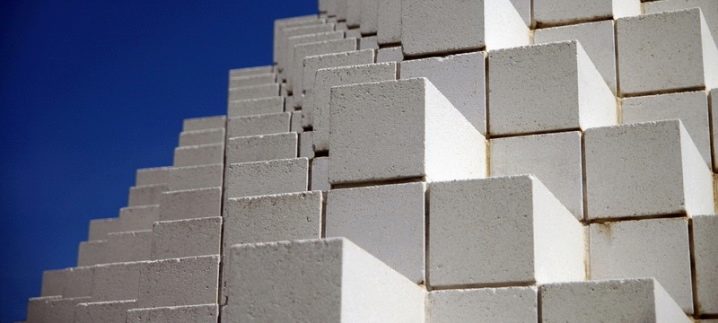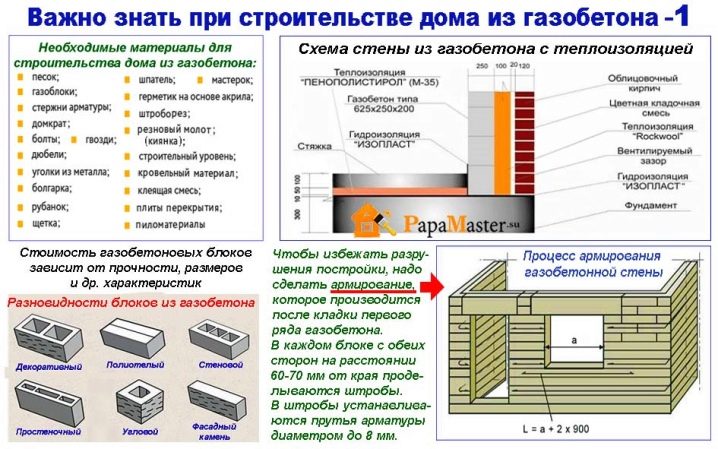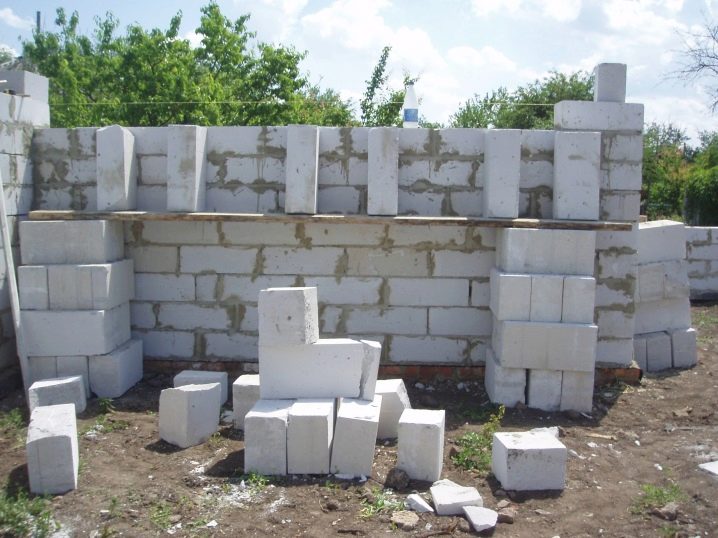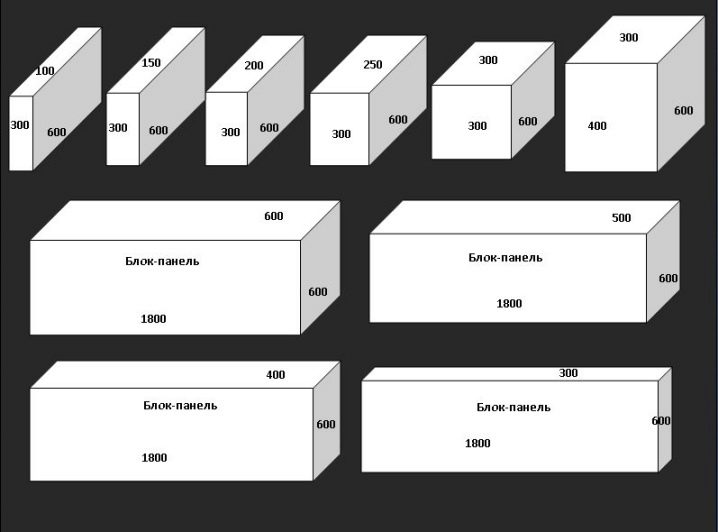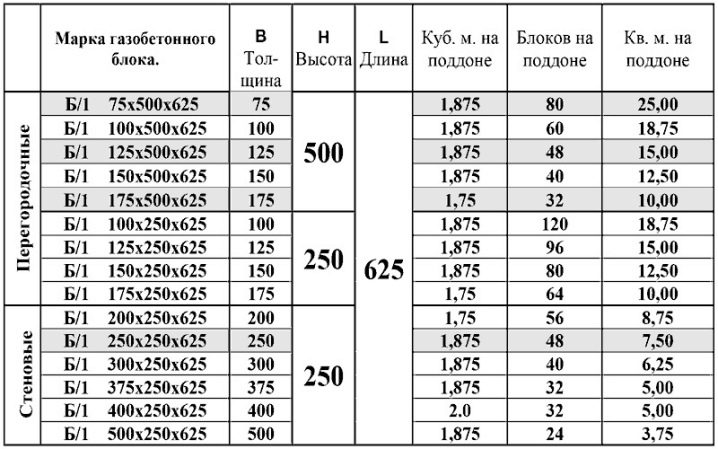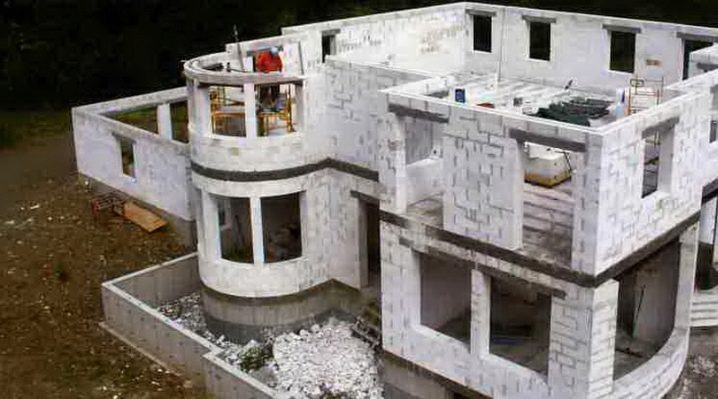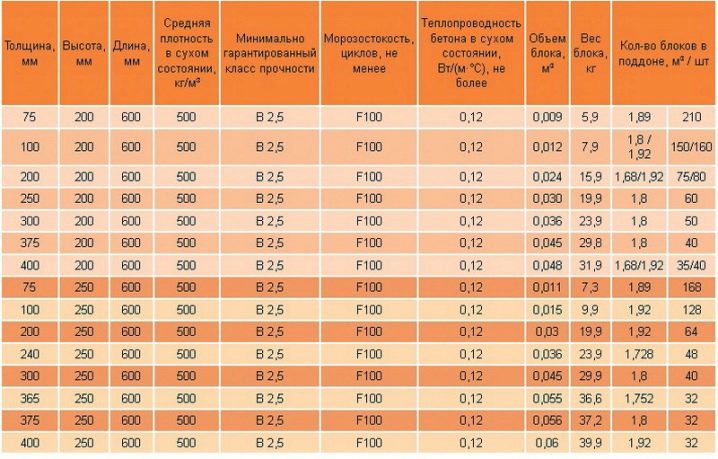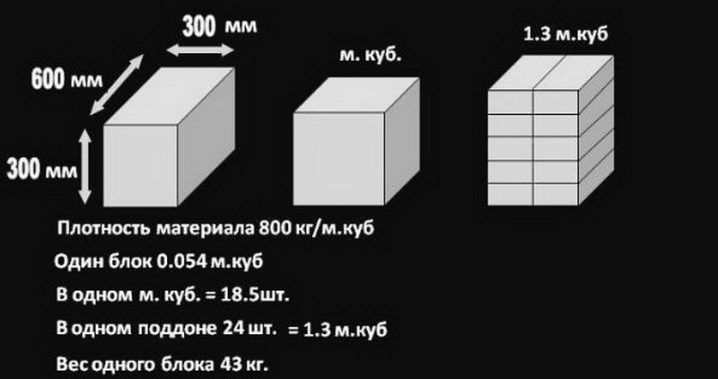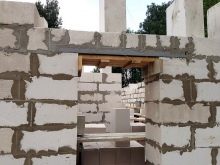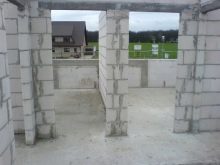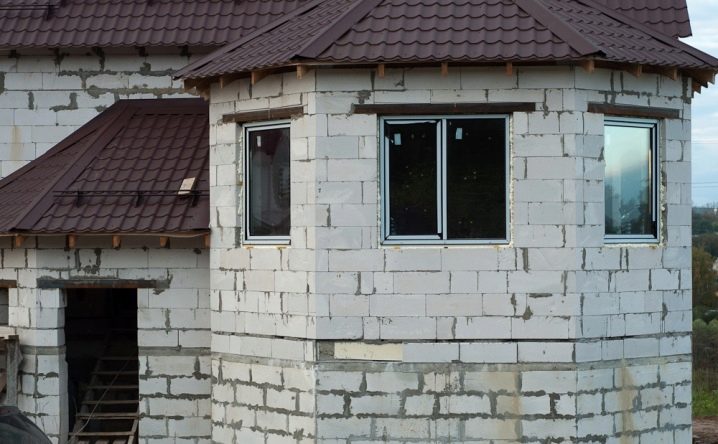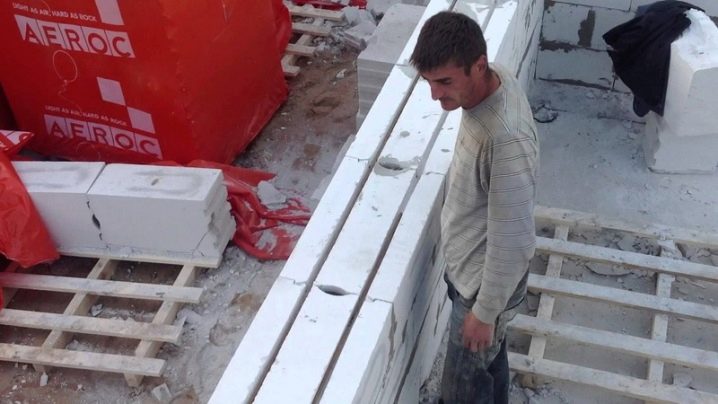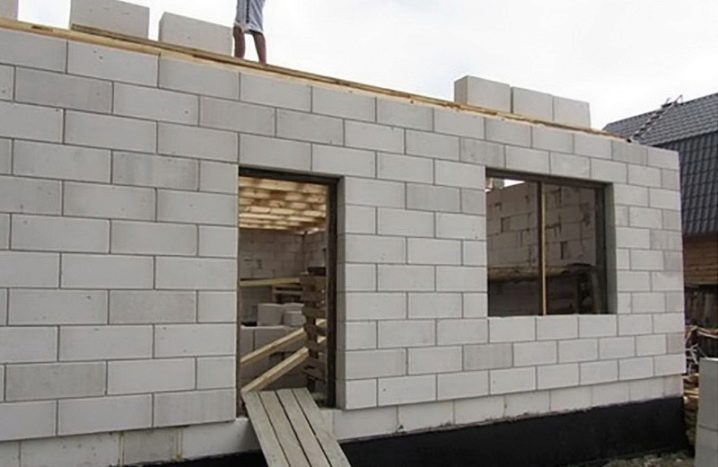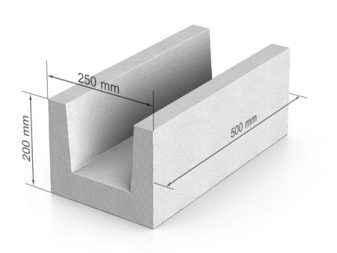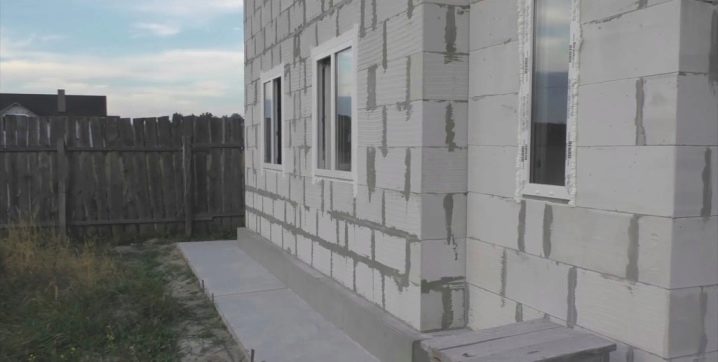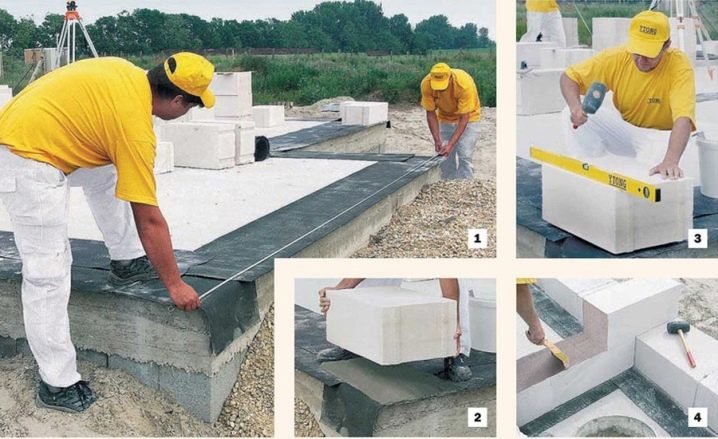Features of the calculation of aerated concrete at home
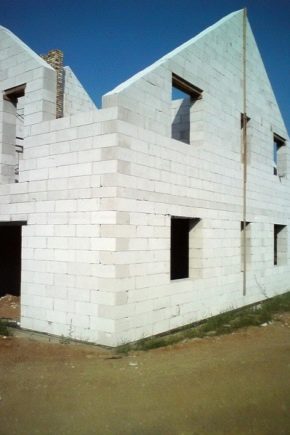
Aerated concrete - widely demanded material. Its advantages over other options are undoubted. It is very important to calculate the required volume to prevent errors.
Initial data
The calculation of the number of gas blocks is carried out taking into account the design parameters of the house and the geometry of elements Merchants measure their goods in cubic meters. Therefore, calculations are also recommended in meters. Depending on the size, the purpose of the block is determined. Let the masonry element (gas block) of size 0.4x0.625x0.25 m be taken for calculation.
Min wall thickness
The smallest wall thickness when using serial aerated concrete blocks is 10 cm. In practice, large elements are also used.The outer walls of houses are usually erected from aerated concrete parts of a size of 0.4 m. Smaller details are used in the design of partitions inside the building. It does not depend on the climatic characteristics of the area.
Quantity and weight
In one cubic meter
Begin by determining the volume of 1 unit of aerated concrete. It is calculated by multiplying all three key indicators. For example, 40x62.5x25 cm in the end give 0.0625 cu. m. for 1 pc. the largest size. Now you want to calculate how much will be 1: 0.0625. The conclusion is logical: 16 aerated concrete blocks are placed in 1 cube.
First, you need to decide exactly with the desired values. If blocks of 200x300x600 mm are used, the situation changes. The volume of a single unit will be 0.036 cu. m. When using structures of size 250x300x600 mm, the total volume reaches already 0.045 cu. That is, 1 and 3 m includes 27 and 22 blocks, respectively.
In the pallet
Recalculate the volume on the pallet is not worth it at once, as well as calculate how much one unit weighs. You must first make an amendment to 5, and sometimes 10% excess, which must be added. The fact is that in real construction, there may always be overruns of parts. It is also worth remembering about production defects: it happens even on first-class lines.
Full-fledged calculation also involves determining the loads that will act on the foundation. These loads are calculated according to the mass of building material in a given volume.
There are 4 main product categories, differing in type of fillers:
- especially light and extremely porous (approximately 500 kg per 1 cubic meter);
- light (for filling it is used shell rock or expanded clay, density up to 1800 kg per 1 m3);
- heavy (from 1800 to 2500 kg) products;
- exceptionally heavy (weight of 1 cubic meter varies from 2.5 to 3 tons).
In heavy aerated concrete, crushed stone and gravel mass are used for filling, and in heavyweight, coarse fraction substances. The standardized pallet can hold 1 cu. m building material. Therefore, it is possible to determine the number of blocks placed on a pallet by their size. And already this figure will allow to find out how many pallets need to be ordered on a building site.
It is very important that a house built of aerated concrete justifies itself economically. Otherwise, even the relative cheapness of the material itself does not help out. Increasing the thickness of the walls in order to deliberately ensure a decent level of insulation, thereby increasing the total costs.The subsequent saving of fuel or electric current may not justify the investment made. Standard requirements stipulate that in homes where people live, columns and walls of autoclaved aerated concrete in the load-bearing walls must be exactly 0.6 m thick.
For self-supporting walls, this figure is 50% less, that is, 0.3 m. It is usually considered that when constructing buildings, one should be guided by the instructions of the SNiP regarding thermal insulation. In fact, these instructions are not rigorous. There are a number of reservations to reduce real indicators, starting from the "user approach". To reduce the thickness of the walls compared to the standards, you need to consider the relative fuel consumption.
Its share per 1 cu. m., should provide such a temperature drop, so that dew on the inner walls is impossible. As practice has shown, reducing the rate of thermal resistance of walls, increase fuel costs only to a small extent.
Much depends on:
- climate of the area;
- wind forces and directions;
- thermal insulation quality;
- reliability of the heat source;
- fuel used;
- Generation efficiency;
- economic feasibility of certain steps.
When counting the number of blocks stacked on 1 pallet, it is necessary to take into account that the dimensions of the pallets themselves may not be equal to 1 m3.
In addition to this dimension, the following standards also comply with the norms:
- 0,9;
- 1,44;
- 1.8 cu. m
If you lay aerated concrete blocks of 0.6x0.3x0.2 m on these pallets, you will receive accordingly:
- 25;
- 40;
- 50 pieces.
Experts note that when buying large quantities of building materials, it is undesirable to round the calculated values. It may be unnecessarily high "price" slip. The most difficult to make a calculation, if you use both non-standard blocks and non-standard pallets. In this case, the dimensions of the packs are up to a width of 1 m, a height of 120 cm, and a length of 80 cm. In total, this arrangement takes 0.96 square meters. m
When placing units in a similar way with dimensions of 60x30x20 cm, real losses will amount to 60% by volume. When large shipments are shipped to build a large house, this is very significant. For your information: when ordered blocks are received, it is required to verify the real numbers with those indicated in the accompanying documentation. Part of the manufacturers lays in the aerated concrete various waste, lowering the quality of the finished product.Therefore, it is necessary to carefully measure the dimensions and mass of each brought block.
How to calculate for the construction?
The calculation of the laying of aerated concrete blocks for the construction of a house must begin with determining the volume of one wall laid out. Let its length be 7 m, height 4 m, and thickness 0.6 m. Then the arithmetic volume should be 16.8 cubic meters. m. But this indicator is true only for a completely flat and deaf along the entire length of the wall.
In reality, you need to read:
- openings under the windows;
- openings under the door;
- recesses for arches and other decorative items.
If a two-story house is being built, the difference turns out to be very significant, as in the construction of large single-story buildings. Even the low price does not justify inattention to this circumstance. For your information, you need to buy aerated concrete only from trusted suppliers. Some companies are trying to lay in the middle of the pallet defective products. They additionally increase the total expense and costs.
Careful calculation also means paying attention to the height of the floors and gables. In the presence of a penthouse determine the number of blocks based on its properties.Let a house be built with a length of 6 and a width of 9 m, in which the ceiling of the first floor is raised by 300 cm. Above there is an attic 2.5 m in height. It is covered with a roof with two ramps.
Also accept for ease of calculation that the gas will be laid out in 1 layer. The structures used are 0.625x0.3x0.25 m. The total area of the external walls will be 90 square meters. m. Let the windows and doors, other deductible items account for 20 square meters. m. Then the size of the outer part of the house under construction will be equal to 70 m2.
To save even more, take into account the dressing in the corners. Simply put, they take away the area of aerated concrete located at the joints from the previously obtained figure. Then 70 is divided by 0.625 and by 0.25 - then 448 blocks will be obtained. Just calculated and the number of cubic meters of aerated concrete. It will be 42 m3.
All these calculations relate only to the first floor, and the consumption of building materials on a triangular, for example, the attic is determined specifically. First, it turns out the area of the room. Then it will need to double and subtract from the result the area of the windows. When calculating, the number of used blocks is always rounded up - this is more reliable.
Next in line are the inner walls of the building. The approach to determining the costs of building materials is the same as in previous cases. This scheme applies to the arrangement of partitions inside. For them, they usually take aerated concrete of smaller thickness than for capital parts. It is also important not to forget about the correction factor equal to 5%.
It is necessary to take into account that the wall blocks are mostly made of a rectangular configuration. But products, similar to the letter U, mostly go to the formation of jumpers. To calculate the need for them is somewhat more difficult.
Constructions resembling U have the following dimensions:
- height 25 cm;
- length 50 or 60 cm;
- in width from 20 to 40 cm.
When buying aerated concrete blocks used for external walls, it will be necessary to abandon products thinner than 20 cm. In the inner parts of the premises, 8.5 cm thick constructions are actively used. These requirements should also be taken into account when calculating the need for the material. Ultralight aerated concrete is purchased mainly for the performance of finishing works and for insulation. Accordingly, its active use reduces the calculated load on the foundation of the building.
When using lightweight concrete, the severity of concrete blocks is determined primarily by sand. That it is the densest of the components of the masonry mix. As for heavy aerated concrete blocks, this option is used most often. After all, high strength and reliability fully justify the inflated mass. Determine the severity of the design to be built, taking into account not only sand, but also rubble and cement.
Masonry 200 and 250 mm is used most often in monolithic-frame construction and in the construction of one-story houses. We are talking only about those buildings that do not need increased heat saving. Professionals for monolithic frame structures more often choose blocks with a thickness of 25, rather than 20 cm. For thermal properties, they are identical to a brick layer of 1 m. That is why in many cases it is precisely such structures that have to be calculated.
And a few more recommendations:
- aerated concrete, the density of which corresponds to the marks D600, D700, is best suited for high-rise construction;
- the same material is recommended for responsible construction (where there is a high seismic risk, risk of erosion or other destruction);
- if the blocks of standard dimensions are not satisfied, you can take the closest ones in size and modify them manually.
For information on how to calculate the amount of gas in the house, see the following video.
